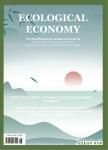Size and proportion of urban and rural middle-income group in China: A comparative analysis based on CHNS and CHIP data
Size and proportion of urban and rural middle-income group in China: A comparative analysis based on CHNS and CHIP data作者机构:Center for Studies of Hong Kong Macao and Pearl River Delta Key Research Institute of Humanities and Social Sciences at Universities of MOE Sun Yat-sen University Institute of Guangdong Hong Kong and Macao Development Studies Sun Yat-sen University
出 版 物:《Ecological Economy》 (生态经济(英文版))
年 卷 期:2017年第10卷第3期
页 面:202-212页
学科分类:02[经济学] 0201[经济学-理论经济学] 020105[经济学-世界经济]
主 题:middle-income group kernel density estimation income distribution M-curve
摘 要:To enlarge the middle-income group and construct the olivary income distribution becomes one of the important issues of the economic development and income distribution reform in China. The income distribution function is estimated with kernel density, and the income distribution M-curve is constructed with CHNS and CHIP data to calculate the middle-income group. Furthermore, a comparative analysis is carried out for the changing trend of the size and proportion of middle-income group. Research conclusion: it is discovered according to the income distribution M-curve that the key to the enlargement of urban middle-income group lies in the lower middle-income group, while the key to the enlargement of rural middle-income group lies in the improvement of the upper middle-income group. The range of middle-income group is expanding, but due to the small scale, low proportion, and poor stability, it has not developed the olivary income distribution structure yet, and income inequality tends to be deepened.



